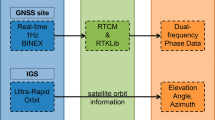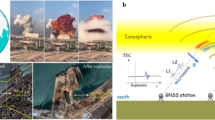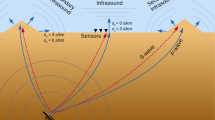Abstract
THE method reported by Y. V. Somayajulu1 for the investigation of horizontal movements of disturbances in the F-layer of the ionosphere utilizes transmissions from a distant short-wave transmitter. We have now evolved a method for a similar study of such travelling disturbances by recording simultaneously the signal-strength of continuous-wave transmissions from two distant short-wave transmitters radiating on frequencies which are very close to each other.
This is a preview of subscription content, access via your institution
Access options
Subscribe to this journal
Receive 51 print issues and online access
$199.00 per year
only $3.90 per issue
Buy this article
- Purchase on Springer Link
- Instant access to full article PDF
Prices may be subject to local taxes which are calculated during checkout
Similar content being viewed by others
References
See preceding communication.
Munro, G. H., Proc. Roy. Soc., A, 202, 208 (1950).
Author information
Authors and Affiliations
Rights and permissions
About this article
Cite this article
RAO, B., RAO, E. Investigation of Travelling Disturbances in the Ionosphere by Continuous-Wave Radio. Nature 172, 819–820 (1953). https://doi.org/10.1038/172819a0
Issue Date:
DOI: https://doi.org/10.1038/172819a0
Comments
By submitting a comment you agree to abide by our Terms and Community Guidelines. If you find something abusive or that does not comply with our terms or guidelines please flag it as inappropriate.



